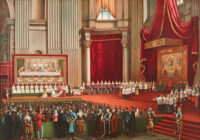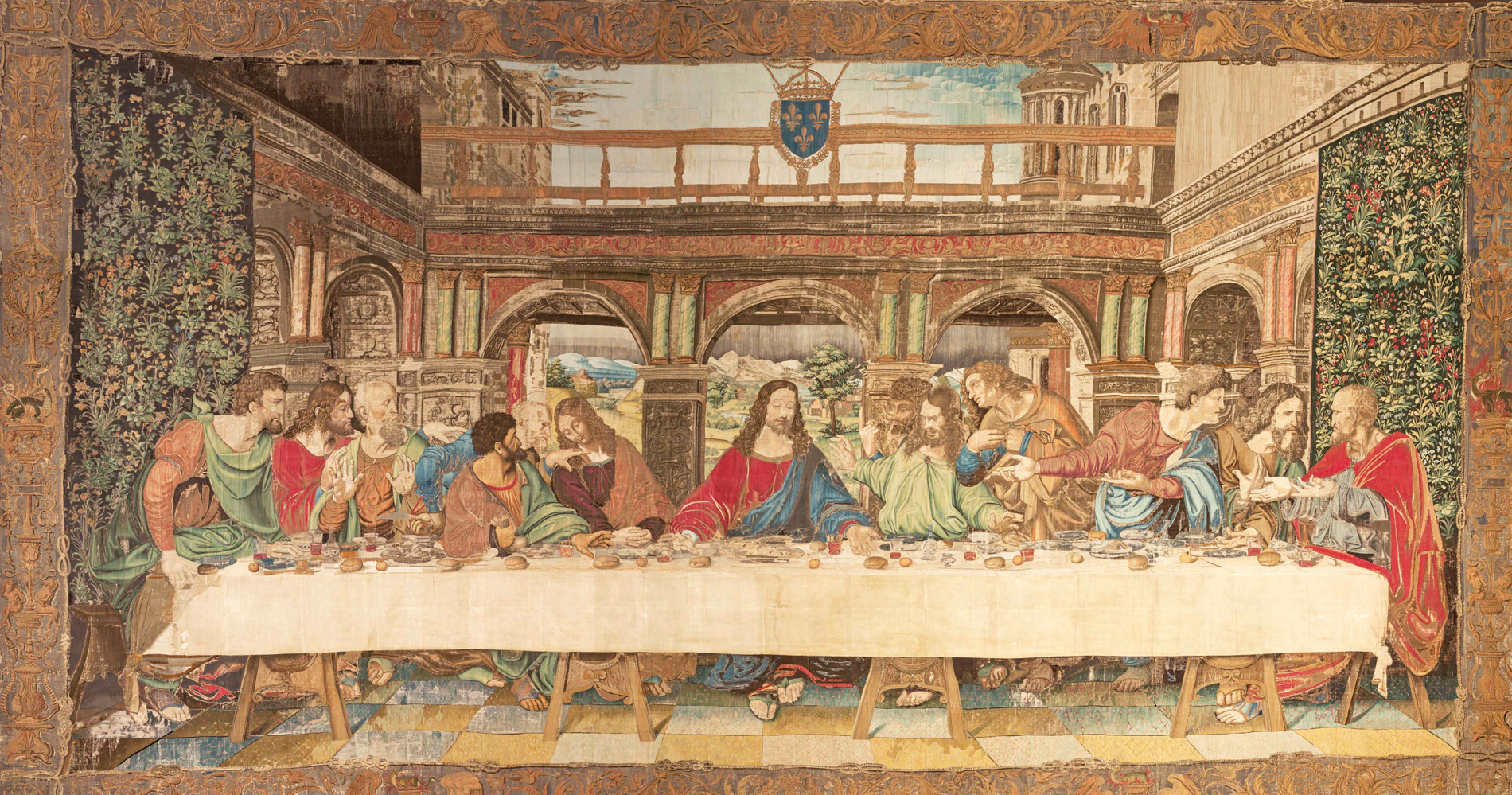A luxurious tapestry version of Leonardo da Vinci’s Last Supper has gone on display at the Reggia di Venaria in Turin as part of an exhibition on how popes used tapestries in rituals and ceremonies. The combination of religious ceremony and tapestry spread from the Vatican to France and from there to the other courts of Europe. The Last Supper tapestry is the keystone of the exhibition as it played an important role in the Holy Week ritual of the washing of the feet.
The tapestry was commissioned by Louise of Savoy and her son, the future King Francis I of France, around 1514 when Leonardo was still living. It’s even possible Leonardo saw it with his own eyes, as he moved to the Château du Clos Lucé in Amboise by invitation of Francis I in 1516. Francis appointed him “first painter, engineer and architect to the king” so he could spend the final three years of his life pursuing his many and varied interests in comfort and ease.
Leonardo was enormously famous in his lifetime and the Last Supper he painted on the refectory wall of the Church of Santa Maria delle Grazie in Milan was recognized as an innovative masterpiece as soon as it was completed in 1498. It was also instantly endangered due to Leonardo’s experimental approach, painting in tempera on dry plaster. Several copies were made in the early 16th century, the earliest documented copy commissioned in 1506.
 Francis and Louise commissioned Brussels weavers to make the tapestry copy from a cartoon by an unknown artist in late 1516. It is 30 feet long and 16 feet high and woven exclusively of silk, gold and silver threads. The supper scene itself is an exact copy to scale of the original, even capturing Leonardo’s signature sfumatura technique, but the setting is very different from the minimalist space with the dark coffered ceiling of the original.
Francis and Louise commissioned Brussels weavers to make the tapestry copy from a cartoon by an unknown artist in late 1516. It is 30 feet long and 16 feet high and woven exclusively of silk, gold and silver threads. The supper scene itself is an exact copy to scale of the original, even capturing Leonardo’s signature sfumatura technique, but the setting is very different from the minimalist space with the dark coffered ceiling of the original.
Instead, the tapestry sets the table inside a bright courtyard, draped with two millefleurs tapestries on each side with a High Renaissance architectural backdrop. A triple-arched bridge connecting two buildings inlaid with multi-colored marbles and a distant landscape of a stream flowing down hills. Above the arches hanging from the balustrade directly in line with Jesus’ head below is the coat of arms of the King of France with the golden fleurs-de-lys on a blue background. A border on all four sides is woven with symbols of Francis and Louise — salamanders, winged horses, knots and monograms.
Francis presented the tapestry to Pope Clement VII in 1533 as a lavish gift celebrating the marriage between Francis’ son, the future Henry II, and the pope’s niece Catherine de’ Medici in Marseilles. The wedding was politically important, cementing the alliance of papacy and France five years after the Sack of Rome by the forces of Holy Roman Emperor Charles V.
It was highly regarded, even among the Vatican’s exceptional tapestries by the likes of Raphael, and it was deployed on special occasions like the Corpus Cristi procession and Holy Week. Still, it began to deteriorate from use. It was first restored in 1681, and less than a hundred years later in 1763, Pope Pius VI had a copy made to use in processions and ceremonies, ensuring the long-term preservation of the original. It has only left the Vatican once since its presentation in 1533: in 2019 when it was exhibited at the Château du Clos Lucé, Leonardo da Vinci’s final residence, on the 500th anniversary of his death.
It was restored by the Vatican’s unique textile conservation team before its departure in 2019. You can see the team at work, stitching tulle netting to reinforce the back of the tapestry, in this fantastic video.
